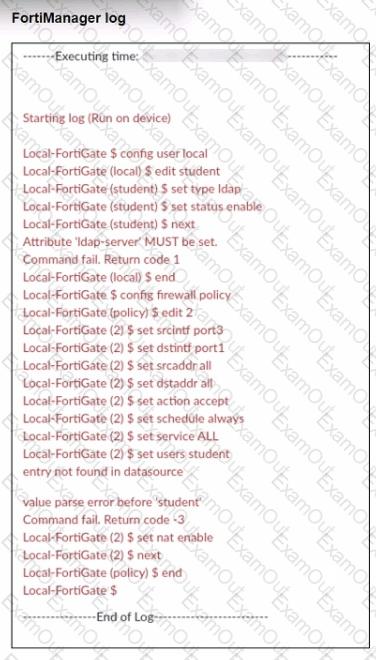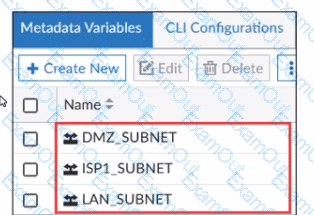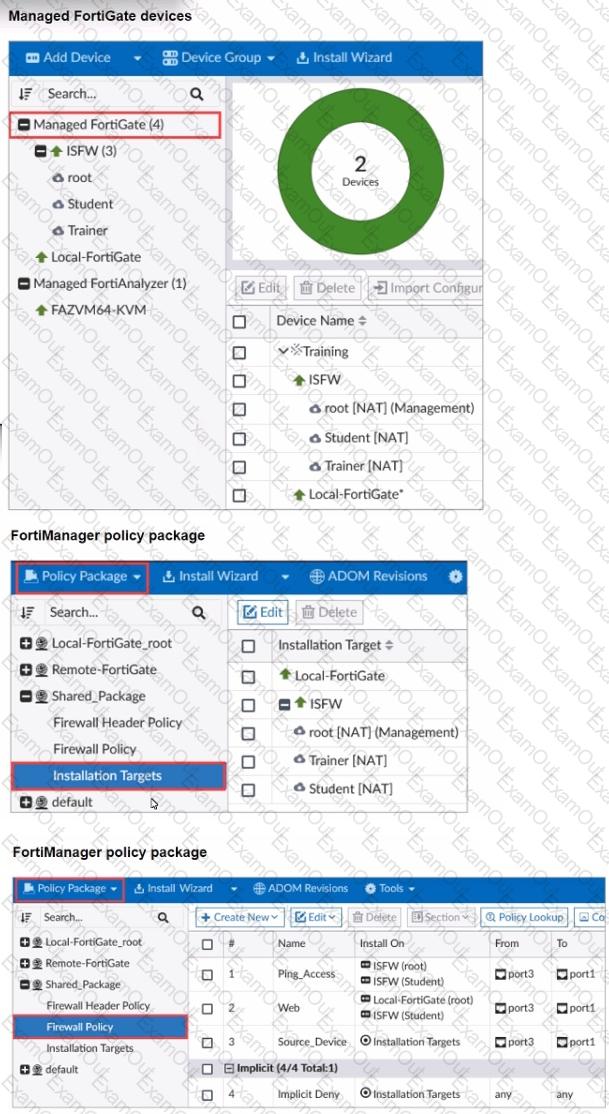An administrator has assigned a global policy package to custom ADOM1. Then the administrator creates a new policy package. Fortinet. in the custom ADOM1. What happens to the Fortinet policy package when it is created?
Exhibit.

Which two statements about the output are true? (Choose two.)
An administrator has enabled Service Access on FortiManager. What is the purpose of Service Access on the FortiManager interface?
Which statement about the policy lock feature on FortiManager is true?
Refer to the exhibit.

What can you conclude from the failed installation log shown in the exhibit?
Exhibit.

What is true about the objects highlighted in the image?
Which two statements about the integrity of databases on FortiManager are correct? (Choose two.)
Refer to the exhibit.

Given the configuration shown in the exhibit, what are two results from this configuration? (Choose two.)
You are moving managed FortiGate devices from one ADOM to a new ADOM.
Which statement correctly describes the expected result?
Refer to the exhibit.

Given the configuration shown in the exhibit, which two conclusions can you draw from the installation targets in the Install On column? (Choose two.)

